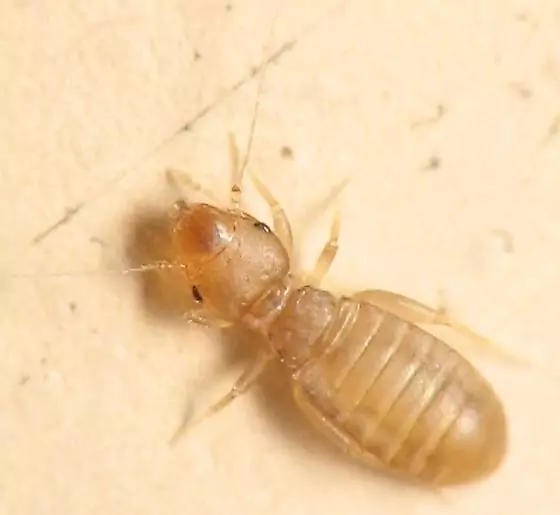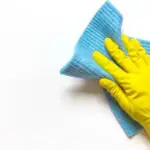You wake up to unfamiliar tiny bites on your skin or spot suspicious critters crawling near your bed. Naturally, your mind jumps to one conclusion—bed bugs! But before you panic and start flipping your mattress, take a breath. Not all small, brownish, or reddish bugs are bed bugs. A variety of pests can mimic their appearance and behavior, causing unnecessary concern or, worse, delayed action if they’re the real deal.
With our expert guide, we have covered 15 bugs that look like bed bugs, how to identify them, why they might be in your home, and, most importantly, how to get rid of them. Learn more, and you’ll be better equipped to tell friend from foe and protect your living space.
According to entomologist Dr. Jennifer Smith, “Identifying bed bugs can be challenging due to their similar appearance to other insects. It’s important to pay close attention to key attributes such as shape, size, color, habitat, and activity times. Consulting with a pest control professional is always recommended for accurate identification and effective treatment.”
RELATED BLOGS
- 7-Fastest Ways to Get Rid of Boxelder Bugs Permanently
- 3 Things Pantry Moths Hate-Fastest Way To Get Rid Of Pantry Moths
Bugs That Look Like a Bed Bugs
Bed bugs are tiny, flat, and oval-shaped, typically reddish-brown in color. They grow up to 5–7 millimeters long (about the size of an apple seed) and tend to hide in cracks or crevices close to their food source—you. Similar-looking bugs often share some of these characteristics, making it tricky to differentiate them at first glance.
Key attributes to pay attention to:
- Shape (usually flat and oval)
- Size (small, up to 7 millimeters)
- Color (brown, reddish, or tan)
- Habitat (hidden in soft furnishings or wooden structures)
- Activity times (often nocturnal)
1. Bat Bugs

Appearance: Nearly identical to bed bugs, except for longer fringe hairs on the thorax (you’ll need a magnifying glass to see this).
Habitat: Usually found near bat nests in attics or eaves.
Behavior: They feed on bat blood but can bite humans if bats are absent.
Get Rid of Them: Eliminate bats and seal entry points to ensure no future infestations.
2. Spider Beetles

Appearance: Round and reddish-brown, resembling a bed bug’s shape and color.
Habitat: Found in kitchens or pantries, often feeding on stored food grains.
Behavior: Non-biting; they scavenge for food.
Get Rid of Them: Clean up food debris and seal pantry containers tightly.
3. Booklice

Appearance: Small and pale brown or whitish; they measure about 1–2 millimeters.
Habitat: Found near damp cardboard, books, and wallpaper.
Behavior: Feeds on mold and fungi, not blood.
Get Rid of Them: Reduce humidity levels and remove mold sources in your home.
4. Carpet Beetle Larvae

Appearance: Tiny, hairy, and brown, with a worm-like body.
Habitat: Lurks in rugs, carpets, and furniture.
Behavior: Feeds on fabric, not humans.
Get Rid of Them: Vacuum carpets regularly and wash infested fabrics.
5. Cockroach Nymphs

Appearance: Dark brown, small, and oval-shaped (unlike adult cockroaches).
Habitat: Hidden in walls, cupboards, and under sinks.
Behavior: Scavengers that feed on food debris.
Get Rid of Them: Use bait and block entry points, particularly in kitchen areas.
6. Fleas

Appearance: Tiny jumping insects with flat, reddish-brown bodies.
Habitat: Largely found on pets or soft furnishings.
Behavior: Bites humans and animals, often leaving itchy welts.
Get Rid of Them: Treat pets with flea medication and vacuum frequently.
7. Ticks

Appearance: Flat, small, and brown, often mistaken for bed bugs in dim lighting.
Habitat: Grassy or wooded areas and occasionally inside via pets.
Behavior: Feeds on blood and can transmit diseases.
Get Rid of Them: Check and treat pets and clean areas where they sleep.
8. Book Borers

Appearance: Thin, elongated bodies with tan or reddish coloring.
Habitat: Loves old furniture and books—hence the name.
Behavior: Eats through wood or paper products.
Get Rid of Them: Dispose of heavily infested books. For furniture, consider professional treatment.
9. Clover Mites

Appearance: Tiny (around 1 millimeter), red, and spider-like.
Habitat: Often found on window sills or near indoor plants.
Behavior: Non-biting and harmless to humans.
Get Rid of Them: Use a vacuum cleaner and seal off window cracks.
10. Lice

Appearance: Small, pale brown, and slightly elongated.
Habitat: Found on human bodies or clothing.
Behavior: Feeds on blood, similar to bed bugs.
Get Rid of Them: Use medicated shampoos or creams and wash bedding and clothes.
11. Weevils

Appearance: Small, brown or black, with a long snout.
Habitat: Found in stored grains or pantry items.
Behavior: Non-biting; feeds exclusively on grains.
Get Rid of Them: Clean pantries thoroughly and toss infested food items.
12. Black Carpet Beetles

Appearance: Round, shiny black or dark brown, with an oval body.
Habitat: Lives in carpets, fabrics, and pet hair.
Behavior: Feeds on natural fibers but doesn’t bite.
Get Rid of Them: Regular vacuuming and deep cleaning.
13. Bark Lice

Appearance: Brown, translucent wings and a slim figure.
Habitat: Found on outdoor wood or tree bark but can wander indoors.
Behavior: Feeds on mold and fungi, not blood.
Get Rid of Them: Remove outdoor debris and clean the affected areas indoors.
14. Grain Beetles

Appearance: Brown, slender-bodied with a hard shell.
Habitat: Located near dry goods like cereal or flour.
Behavior: Non-biting and harmless.
Get Rid of Them: Discard infested food and clean pantry spaces.
15. Stink Bugs

Appearance: Large (about 12–17 millimeters), shield-shaped, and brown.
Habitat: Found near windows and lights, especially during cooler months.
Behavior: Non-biting but releases foul smells when threatened.
Get Rid of Them: Remove them gently using a vacuum (don’t squish!).
Why do bed bugs come inside?
Bugs are drawn indoors for a variety of reasons:
- Suitable Temperatures: Many of these bugs prefer moderate, stable climates (e.g., your cozy home).
- Food Sources: Crumbs, grains, mold, or even your blood can attract different intruders.
- Shelter: During cooler months, bugs often seek areas of warmth and safety.
How to get rid of Bed Bugs
To address any infestation effectively:
- Identify the Bug: Use this guide to determine what you’re dealing with.
- Sanitize Your Space: Vacuum floors, furniture, and curtains regularly.
- Seal Entry Points: Use caulking to block cracks and crevices around windows, doors, and baseboards.
- Control Temperature & Humidity: Many bugs thrive in humid or improperly ventilated areas. Invest in a dehumidifier if necessary.
FAQ
Q: What chemical kills bed bugs and their eggs?
A: There are several effective chemicals available for killing bed bugs and their eggs. Common options include pyrethroid insecticides, desiccants, and insect growth regulators. It is recommended to consult with a pest control professional to determine the most suitable and safe chemical treatment for your specific situation.
Q: How to identify bed bugs?
A: Bed bugs are small, reddish-brown insects that are about the size of an apple seed. They have flat, oval-shaped bodies and are typically found in mattresses, box springs, and crevices near sleeping areas. Look for signs of bed bug activity, including dark spots of fecal matter, shed skins, and small blood stains on bedding.
Q: How to get rid of bed bugs on carpet?
A: To eliminate bed bugs on carpet, start by vacuuming thoroughly, paying close attention to areas near the bed and along baseboards. After vacuuming, steam clean the carpet using high heat, as this can help kill bed bugs and their eggs. It is also important to wash any infested bedding, clothing, and rugs in hot water and dry them on high heat.
Q: How to get rid of bed bugs on rugs?
A: Similar to treating bed bugs on carpet, vacuum the rug thoroughly and steam clean it using high heat. Additionally, consider placing the rug in a sealed plastic bag and leaving it outdoors in direct sunlight for a few days, as extreme heat can help kill bed bugs. If these measures do not eliminate the infestation, professional pest control services may be necessary.
Q: How to get rid of bed bugs on the mattress?
A: To treat bed bugs on a mattress, start by removing all bedding and wash it in hot water. Use a stiff brush to scrub the seams and crevices of the mattress, and then vacuum it thoroughly. Encase the mattress in a bed bug-proof cover to prevent further infestation. If the problem persists, consult a pest control professional for further guidance and treatment options.







